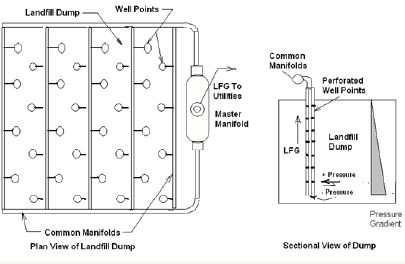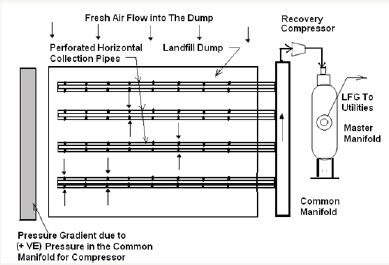- Submissions

Full Text
Research & Development in Material Science
Landfill Gas to Power
Nirmalendu Bandyopadhyay*
Department of Industrial Engineering, Sarsuna Satellite Township, India
*Corresponding author: Nirmalendu Bandyopadhyay, Department of Industrial Engineering, Independent Consulting Engineer, H2/100 Sarsuna Satellite Township, Kolkata-700061, India
Submission: September 16, 2017; Published: October 05, 2017

ISSN : 2576-8840Volume1 Issue3
Abstract
Landfill Gas (LFG) which results from decomposition and bacterial actions of garbage dumps, contain large volume of methane gas in addition to carbon dioxide, moisture, oxides of nitrogen and sulphur. These gases are continuously released into the atmosphere and go up to form Green House Gases (GHG), one notorious contributor to Global Warming. Therefore, there are concerted efforts to use this gas appropriately to prevent its release into the atmosphere. But the main problem is the inadequate quantity of gas available at any particular time for efficient use in any industry. When the landfill dump is large, the volume of gas released is also comparatively; large and can be used in power generation or in industrial furnaces as fuel.
The conventional practice to collect and treat the gas is through well points. In this method, the entire area of the dump is traversed by vertically driven pipelines having small holes on the lengths called Well points, sunken into the garbage dump. The released LFG enters the vertical pipelines through these holes and move up into common manifolds which are set of horizontal pipelines into which the vertical well points terminate. These manifolds are connected to a master manifold which collects the entire gas produced from the dump .The schematics of this system is shown in the sketch below.
The disadvantage of this system is that the LFG collection is dependent on the pressure generated at each layer of the fill and as the bacterial action is maximum towards the bottom, the bottom pressure of the gas is more than the upper ones. As a result when this high pressure gas travels up the well points, there is tendency to expel some of the gas produced at upper layers at relatively less pressure. The net effect is loss of aggregate gas production from every well point areas. This is explained by the same sketch. It can thus be concluded that by this conventional collection system, large quantity of gas is lost back into the dump and then to the atmosphere and less gas available at the well points at substantially low pressure (Figure 1).
Figure 1: Conventional Method of LFG production.

Alternative Concept-Maximum Recovery
In this method, the well points are replaced by set of horizontally laid perforated pipelines at various layers. These pipes are then connected to common manifold and then to the Master Manifold. A positive pressure is created inside the common manifold by a Recovery compressor. As a result the entire LFG produced at different layers is collected without any loss. This also helps in introduction of fresh air into the dump which helps in aerobic digestion of the solid wastes .and higher production of LFG. The release of LFG into the air is totally eliminated and thus no emission of GHG .The schematics of this concept is shown in the sketch below.
In both the cases the collected LFG can be used for power generation or in industrial plants. Large metro cities and developing suburbs generate enormous quantity of mixed garbage or municipal solid wastes which are dumped over large areas for biological degradation and conversion to organic manure after separation of plastics and non flammable materials like glass, cement blocks, bricks, steel and other metals (Figure 2).
Figure 2: Alternative Concept- Maximum LFG Recovery.

Conclusion
The strong awareness that has come in the areas of sustainable energy generation is a welcome step and countries should embark on these projects in big ways. The developed countries have taken up these with right earnestness and have started spending substantial amount to set up Mega Wind Farms but these initiatives are lacking in developing countries. It will not only benefit them but help protect the environment which is suffering rapid degradation.
© 2017 Nirmalendu Bandyopadhyay. This is an open access article distributed under the terms of the Creative Commons Attribution License , which permits unrestricted use, distribution, and build upon your work non-commercially.
 a Creative Commons Attribution 4.0 International License. Based on a work at www.crimsonpublishers.com.
Best viewed in
a Creative Commons Attribution 4.0 International License. Based on a work at www.crimsonpublishers.com.
Best viewed in 







.jpg)






























 Editorial Board Registrations
Editorial Board Registrations Submit your Article
Submit your Article Refer a Friend
Refer a Friend Advertise With Us
Advertise With Us
.jpg)






.jpg)













.bmp)
.jpg)
.png)
.jpg)














.png)

.png)



.png)






